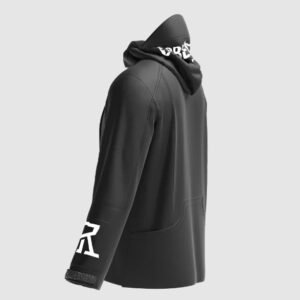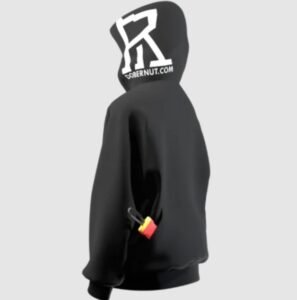Choosing the right training wear for your dog can make a world of difference in their training journey. From keeping your pet comfortable to ensuring their safety during every session, the right gear can transform training time into a productive and enjoyable experience for both of you.
Also if you have a playful puppy learning the basics or a strong working dog mastering advanced commands, selecting the right training wear can help you get the best results.
In this guide, we’ll share expert tips on how to choose the best pet training wear, tailored to your dog’s needs and training environment.
Understanding the Importance of Proper Pet Training Wear
Before getting into the details, it’s important to understand why choosing the right pet training wear is so important. Training sessions often involve a lot of movement, exposure to different environments, and sometimes, things can get a little messy. The right training gear is built to handle these challenges, keeping your dog comfortable, secure, and focused throughout the session.
Safety is another key factor. A well-fitted harness, for instance, helps you maintain control of your dog without putting undue pressure on their neck. Some training wear also comes with features like reflective strips, which are especially useful for early morning or evening training. These features ensure that you and your dog stay visible, making outdoor training sessions safer and more effective.

Choosing the Right Type of Training Wear for Your Dog
There are various types of training wear, each suited to different training needs. Here’s a breakdown of the most popular types and how to choose the best for your dog:
- Dog Training Harnesses Harnesses are a go-to for many trainers, especially for larger breeds or dogs that tend to pull on the leash. A good training harness distributes pressure evenly across the dog’s chest and back, making it more comfortable than a standard collar. This is particularly useful for dogs that need to learn how to walk calmly on a leash.
When choosing a harness, look for one that is adjustable and fits snugly without restricting movement. Padding around the chest and straps can also enhance comfort, especially during long training sessions. For dogs that need a little extra guidance, a front-clip harness can help correct pulling behavior more effectively.
- Dog Training Collars Training collars come in a variety of styles, including flat collars, martingale collars, and head collars. Each has its own purpose and can be effective when used correctly. Flat collars are best suited for dogs that are already well-behaved on a leash, while martingale collars provide a gentle correction without causing discomfort, making them ideal for dogs that slip out of standard collars.
Head collars are often used for dogs that need more control during training, as they guide the dog’s head and help prevent pulling. However, it’s important to ensure that your dog is comfortable with a head collar and that you introduce it slowly to avoid stress.
- Reflective and High-Visibility Gear For those who train their pets outdoors or in low-light conditions, reflective training wear is a must. Reflective vests, collars, and harnesses can make your dog visible to cars and other pedestrians, significantly reducing the risk of accidents. High-visibility gear is especially crucial for dark-colored dogs who may be harder to spot at dusk or dawn.
When choosing reflective wear, opt for items that have reflective strips on multiple sides for maximum visibility. Brightly colored materials can also help, as they make it easier to spot your dog during off-leash training in large fields or wooded areas.

How to Select Training Wear Based on Your Dog’s Needs
Each dog is unique, and their training wear should reflect their specific needs. Consider the following factors when selecting training gear:
- Size and Breed A small dog like a Chihuahua will have very different needs compared to a large working breed like a German Shepherd. For smaller dogs, lightweight harnesses that don’t add extra bulk are ideal, while larger breeds might benefit from more robust gear that can withstand their strength.
Measure your dog’s chest, neck, and back length accurately before purchasing training wear to ensure a good fit. A poorly fitted collar or harness can cause chafing or restrict movement, making training uncomfortable for your dog.
- Temperament The temperament of your dog plays a key role in selecting training wear. For example, a dog that gets anxious during training might benefit from a snug-fitting vest that offers a calming effect, similar to a thunder shirt. On the other hand, a highly energetic dog may need a durable harness that can handle sudden movements without breaking.
Dogs that tend to chew or bite at their harnesses should have materials that are chew-resistant, such as heavy-duty nylon or reinforced fabric. Identifying your dog’s behavior patterns can help you select training wear that best supports their training progress.
- Training Environment Where you train your dog can also influence your choice of training wear. For indoor training or basic obedience sessions, a simple collar or lightweight harness may be sufficient. However, if you train outdoors, you’ll need to account for changing weather conditions.
In colder climates, training jackets or coats can help keep your dog warm, ensuring they stay comfortable and focused during training. For warmer areas, breathable materials are essential to prevent overheating. Some outdoor harnesses even come with built-in cooling packs to keep dogs cool during summer training.
Materials to Look for in Quality Training Wear
The durability and comfort of training wear often come down to the materials used. Here are some of the best materials to consider:
- Nylon: Nylon is a popular choice for training wear due to its strength and resistance to wear and tear. It is lightweight, making it ideal for harnesses and collars that won’t weigh your dog down. Nylon is also easy to clean, which is a plus for active dogs that may get dirty during training.
- Neoprene: Neoprene, often used in wet suits, is another excellent option for pet training wear. It’s water-resistant and comfortable, making it perfect for dogs that train in wet or humid conditions. Neoprene harnesses and vests are also cushioned, providing additional comfort during longer sessions.
- Leather: For those looking for a more classic and durable option, leather is a strong choice. Leather collars and harnesses are highly durable and can last for years with proper care. They also tend to soften over time, molding to your dog’s body for a custom fit. However, leather requires regular maintenance to prevent cracking and should not be used in wet conditions.
How to Properly Fit Training Wear
A well-fitted collar or harness ensures that your dog is both comfortable and secure. To ensure a proper fit, follow these steps:
- Measure Correctly: Use a soft measuring tape to measure around your dog’s neck, chest, and any other area specified by the manufacturer. Always add a few extra inches for comfort, especially if your dog is still growing.
- Check for Movement: Once the collar or harness is on, check to see if you can fit two fingers between the gear and your dog’s body. This ensures that it’s not too tight but also won’t slip off during training. For harnesses, make sure the straps don’t rub against your dog’s skin or restrict their shoulder movements.
- Observe Your Dog’s Behavior: During the first few training sessions, pay attention to how your dog moves with the new gear. If they seem uncomfortable or start to develop any chafing, it may be necessary to adjust the fit or choose a different style.
Maintaining and Cleaning Training Wear
Proper maintenance of training wear not only extends its life but also keeps your dog healthy by preventing skin irritation from dirt and bacteria. Most nylon and neoprene gear can be washed with mild soap and water, then air-dried. Leather items should be cleaned with a special leather cleaner and conditioned regularly to maintain flexibility.
Make it a habit to inspect your dog’s training wear before each session for any signs of wear, such as fraying straps or loose buckles. Replacing worn-out gear promptly ensures that your dog remains safe during training.
Final Overview On Investing in the Right Training Wear for Success
Choosing the right pet training wear is an investment in your dog’s comfort, safety, and overall training success. By considering factors like your dog’s size, temperament, and the environment in which you train, you can select training gear that meets their specific needs.
Even if you’re training a high-energy working dog or a timid pup just starting out, the right gear can make each session more productive and enjoyable. With thoughtful choices and proper care, your dog’s training wear will support them through every step of their learning journey, helping you both reach your training goals.

